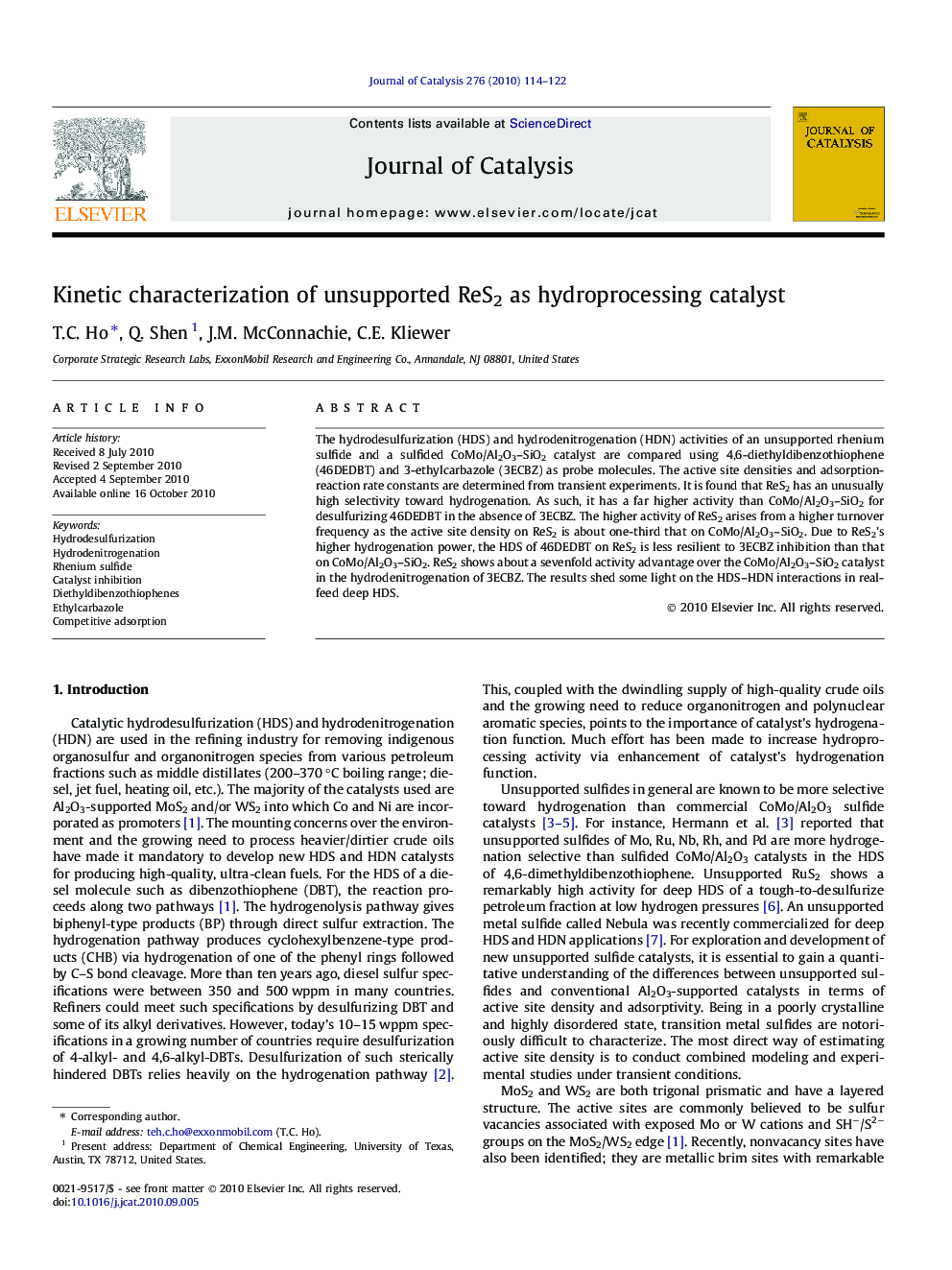| Article ID | Journal | Published Year | Pages | File Type |
|---|---|---|---|---|
| 62061 | Journal of Catalysis | 2010 | 9 Pages |
The hydrodesulfurization (HDS) and hydrodenitrogenation (HDN) activities of an unsupported rhenium sulfide and a sulfided CoMo/Al2O3–SiO2 catalyst are compared using 4,6-diethyldibenzothiophene (46DEDBT) and 3-ethylcarbazole (3ECBZ) as probe molecules. The active site densities and adsorption-reaction rate constants are determined from transient experiments. It is found that ReS2 has an unusually high selectivity toward hydrogenation. As such, it has a far higher activity than CoMo/Al2O3–SiO2 for desulfurizing 46DEDBT in the absence of 3ECBZ. The higher activity of ReS2 arises from a higher turnover frequency as the active site density on ReS2 is about one-third that on CoMo/Al2O3–SiO2. Due to ReS2’s higher hydrogenation power, the HDS of 46DEDBT on ReS2 is less resilient to 3ECBZ inhibition than that on CoMo/Al2O3–SiO2. ReS2 shows about a sevenfold activity advantage over the CoMo/Al2O3–SiO2 catalyst in the hydrodenitrogenation of 3ECBZ. The results shed some light on the HDS–HDN interactions in real-feed deep HDS.
Graphical abstractShown here are adsorption constants for 4,6-diethyldibenzothiophene (46DEDBT) and 3-ethylcarbazole (3EBZ) and hydrodenitrogenation rate constants on sulfided CoMo/Al2O3–SiO2 and ReS2. ReS2 is more active for HDN; its HDS activity is less resilient to 3ECBZ inhibition.Figure optionsDownload full-size imageDownload high-quality image (125 K)Download as PowerPoint slide
